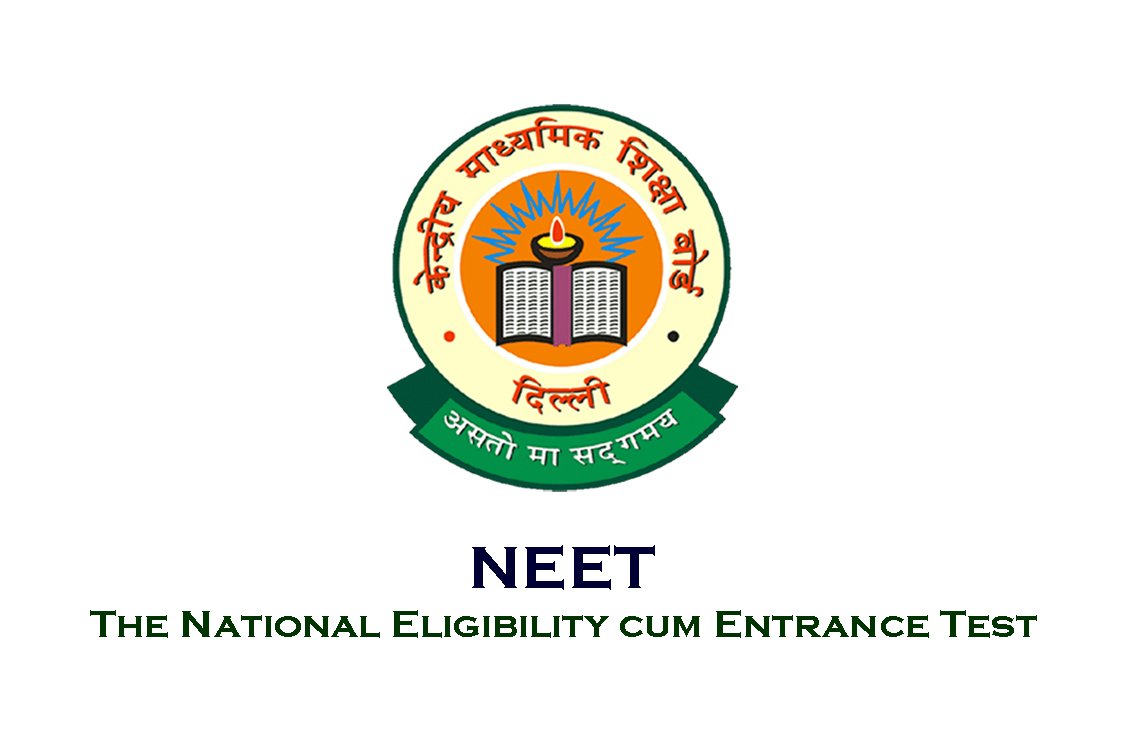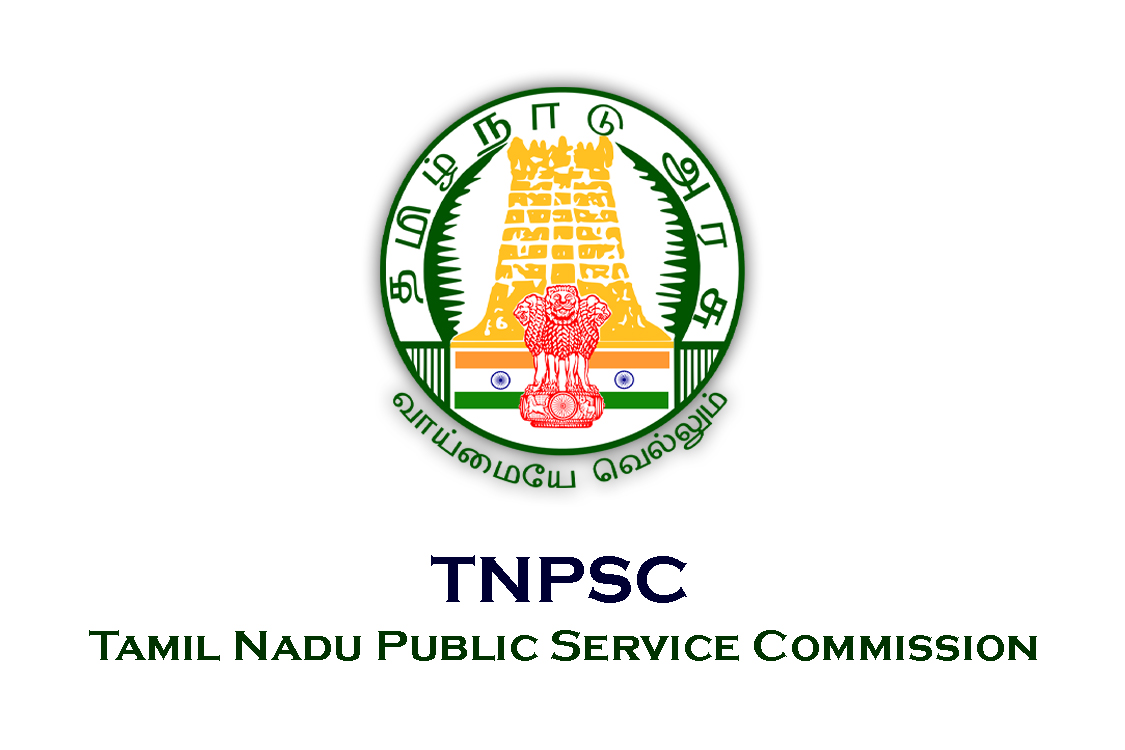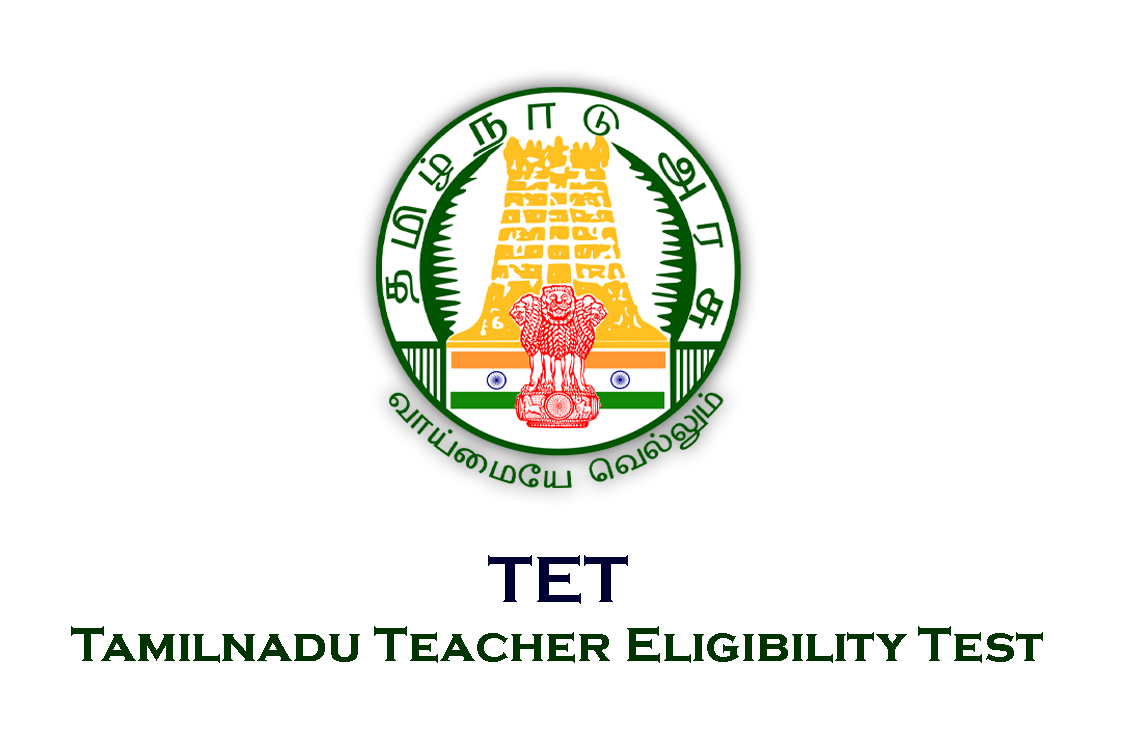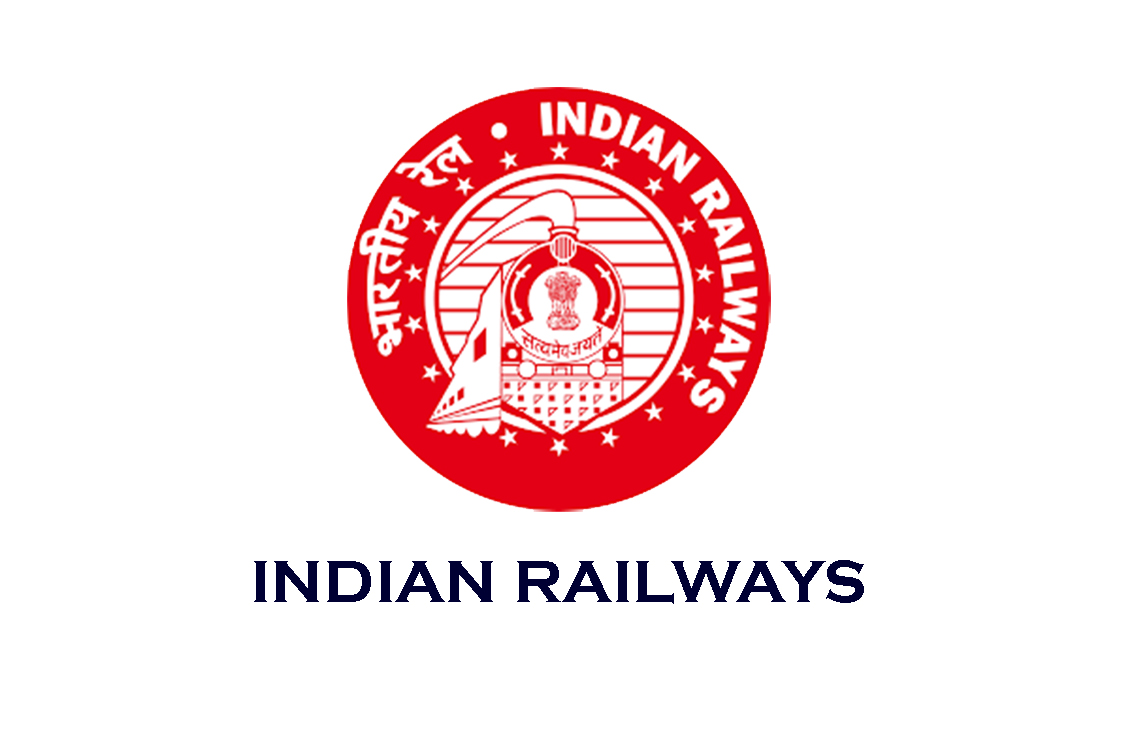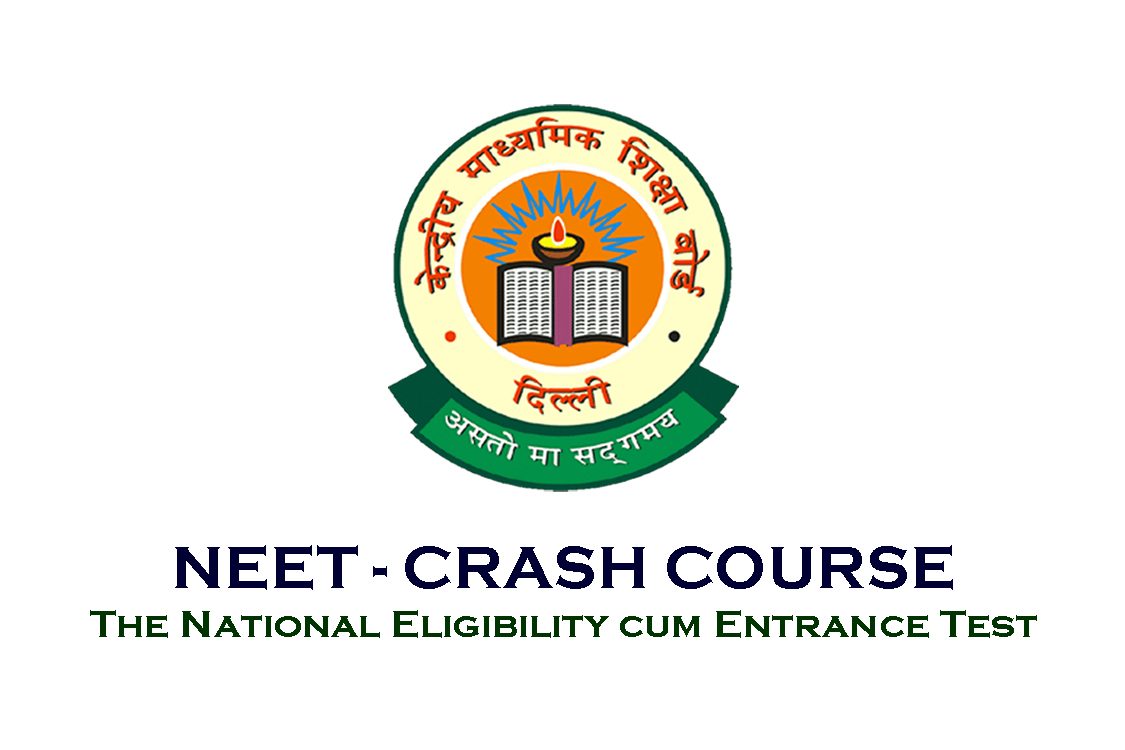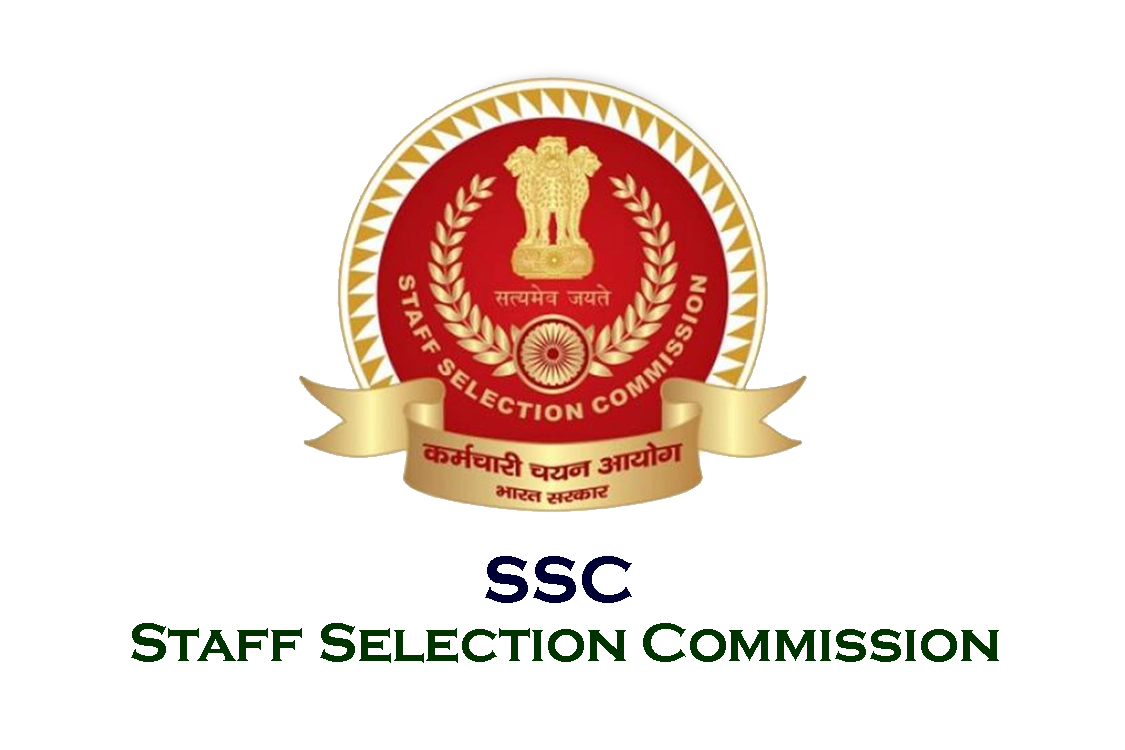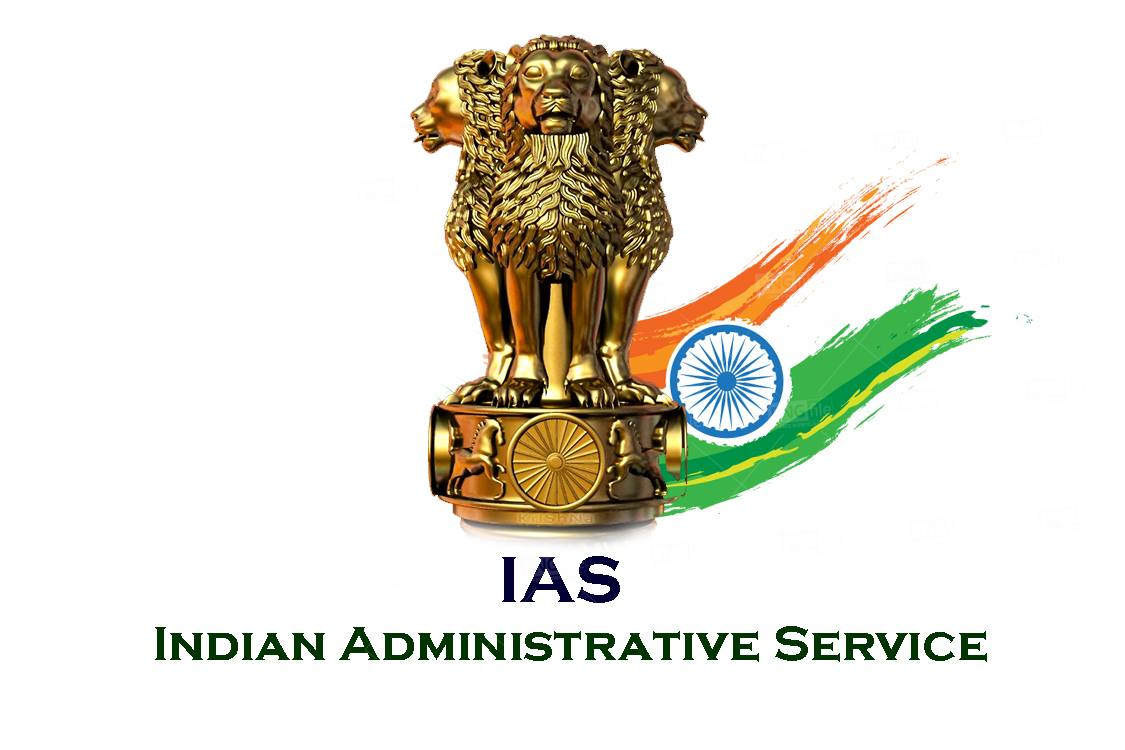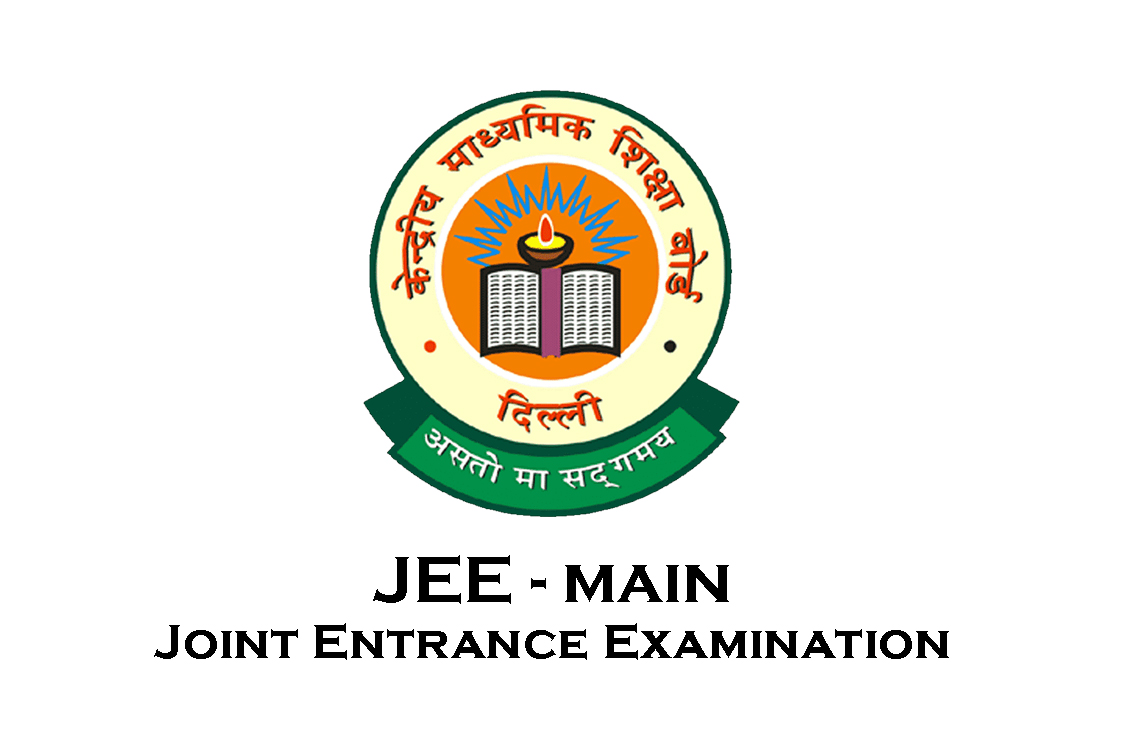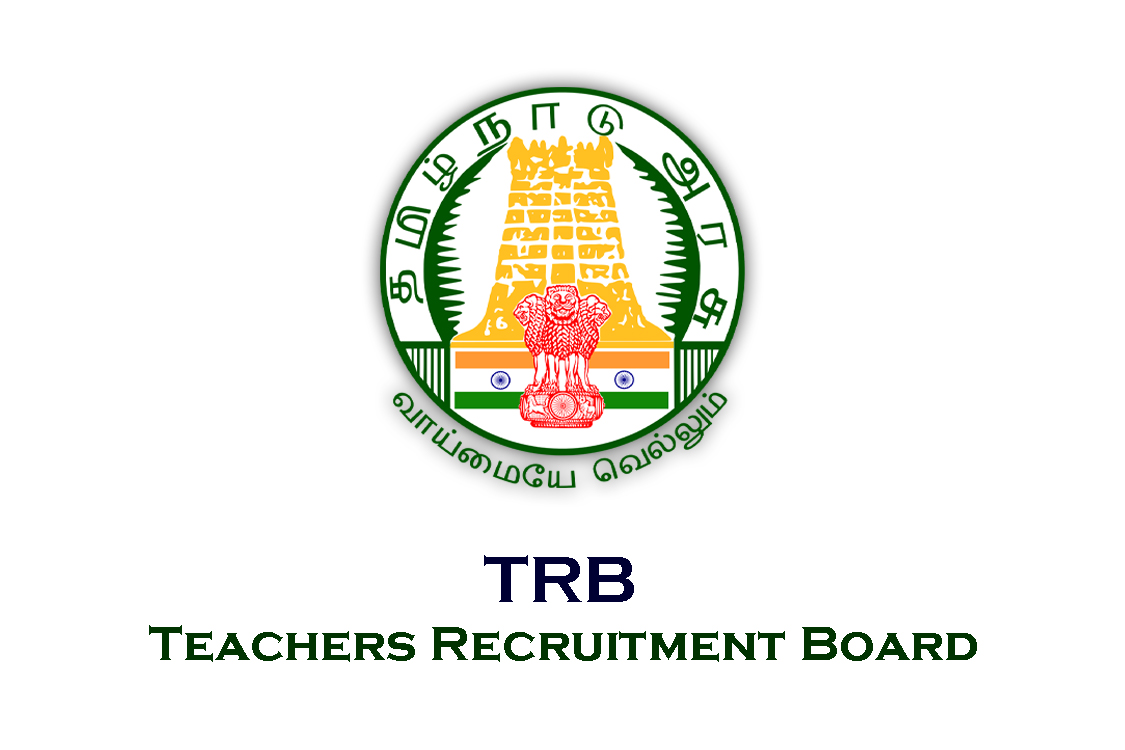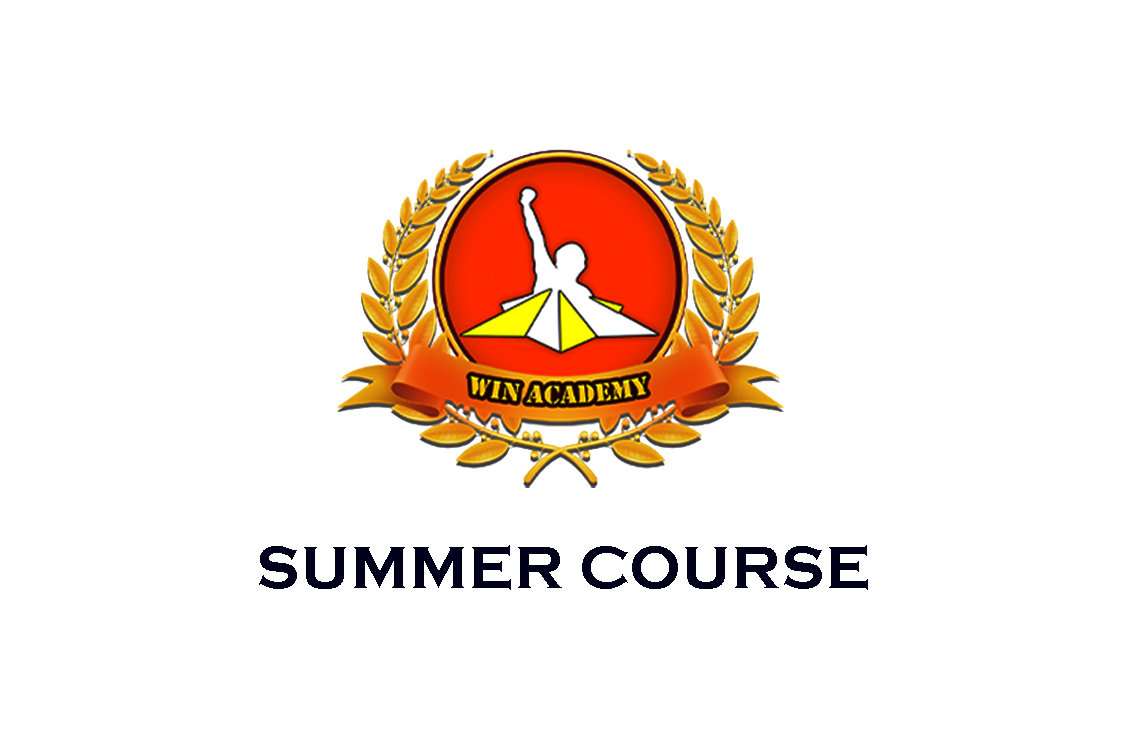+91 75400 77122
+91 75400 70122
winacademy100@gmail.com
Our Courses
- Home
- Courses
Our Courses
NEET
NEET or National Entrance cum Eligibility Test conducted annually by the NTA (National Testing Agency) is a medical entrance test carried out across the country. A successful attempt at NEET enables students to avail a seat in any of the medical program such as MBBS, BDS and various AYUSH courses offered in both government and private institutes of India. Following the “One nation One test” policy that was passed, NEET has emerged as the one-tier national level entrance test scrapping all the state entrance tests including AIIMS and JIPMER test.
NEET 2021 Syllabus
NEET syllabus comprises 97 chapters from both NCERT classes 11 & 12 – Physics, Chemistry and Biology.
1. Familiarize yourself with the exam pattern for NEET 2021
2. Sift through the NEET syllabus, chapter-wise weightage and previous years’ trends
3. Devise a study plan/time table
4. Compose notes
5. Resolve question papers, take up mock tests
6. Get your doubt cleared
7. Prioritize chapters and gain conceptual comprehension
8. Take up daily/weekly/monthly assessments
9. Analyze your performance, reward yourself on progress, identify weak areas and work on them
10. Stay focused and motivated. Avoid social media engagements as much as possible.
2) Class 12 or equivalent appearing aspirants are also eligible to apply for NEET.
3) Candidates must have completed 17 years as on December 31, 2021.
4) The decision on the upper age limit is pending, so, all candidates are provisionally eligible to apply for NEET 2021.
5) Qualifying Marks for NEET 2021. The class 12 percentage required for NEET 2021 exam is separate for each category and can be listed as under. NEET eligibility marks in class 12 to be considered are aggregate marks only for PCB subjects.
UR - 50%,
OBC/SC/ST - 40%,
PWD - 45%
6) There are no restrictions on the maximum NEET attempt limit 2021.
7) Nationality:
Indian Nationals, NRIs, OCIs, PIOs & Foreign Nationals aspirants are eligible to apply.
NEET 2021 Exam pattern
| Number of Questions | • Physics – 45 questions
• Chemistry – 45 questions • Biology (Botany + Zoology) – 90 questions Total = 180 MCQs |
|---|---|
| Type of questions | Objective type ( 4 options with 1 correct answer) |
| Duration | 180 minutes (3 hours) |
| Language | English, Hindi, Urdu, Bengali, Oriya, Tamil, Kannada, Telugu, Marathi, Gujarati and Assamese. |
| Marking Scheme | 4 marks are awarded for each correct answer |
| Negative Marking | 1 mark is deducted for each wrong answer |
| Total Marks | 720 |
NEET 2021 Syllabus
NEET syllabus comprises 97 chapters from both NCERT classes 11 & 12 – Physics, Chemistry and Biology.
Physics Syllabus
| Class 11th Syllabus | Class 12th Syllabus |
|---|---|
| Physical world and measurement | Electro statistics |
| Kinematics | Current Electricity |
| Laws of Motion | Magnetic effects of Current and Magnetism |
| Work, Energy, and Power | Electromagnetic induction and alternating currents |
| Motion of systems of particles and rigid body | Electromagnetic waves |
| Gravitation | Optics |
| Properties of Bulk Matter | Dual Nature of Matter and Radiation |
| Thermodynamics | Atoms and Nuclei |
| Behavior of Perfect Gas and Kinetic theory | Electronic Devices |
| Oscillations and wave |
CHEMISTRY Syllabus
| Class 11th Syllabus | Class 12th Syllabus |
|---|---|
| Some basic concepts of Chemistry | Solid state |
| Structure of atom | Solutions |
| Classification of Elements and Periodicity in Properties | Electrochemistry |
| Chemical Bonding and Molecular structure | Chemical Kinetics |
| States of Matter: Gases and liquids | Surface Chemistry |
| Thermodynamics | General principles and Processes of Isolation of Elements |
| Equilibrium | P Block elements |
| Redox reactions | D and F block elements |
| Hydrogen | Coordination compounds |
| s-Block elements (Alkali and Alkaline earth metals) | Haloalkanes and Haloarenes |
| Some p-Block elements | Alcohols, Phenols and Ethers |
| Organic Chemistry – Some basic principles and techniques | Aldehydes, Ketones and Carboxylic Acids |
| Hydrocarbons | Organic compounds containing Nitrogen |
| Environmental chemistry | Biomolecules, Polymers and Chemistry in everyday life |
BIOLOGY Syllabus
| Class 11th Syllabus | Class 12th Syllabus |
|---|---|
| Diversity in the Living World | Reproduction |
| Structural Organisation – Plants and Animals | Genetics and Evolution |
| Cell Structure and Function | Biology and Human welfare |
| Plant Physiology | Biotechnology and its applications |
| Human physiology | Ecology and environment |
NEET Preparation
Do's List:1. Familiarize yourself with the exam pattern for NEET 2021
2. Sift through the NEET syllabus, chapter-wise weightage and previous years’ trends
3. Devise a study plan/time table
4. Compose notes
5. Resolve question papers, take up mock tests
6. Get your doubt cleared
7. Prioritize chapters and gain conceptual comprehension
8. Take up daily/weekly/monthly assessments
9. Analyze your performance, reward yourself on progress, identify weak areas and work on them
10. Stay focused and motivated. Avoid social media engagements as much as possible.
NEET Eligibility By NTA
1) Candidates must have passed 10+2 or equivalent with Physics, Chemistry, Biology/Biotechnology and English as core subjects from a recognized board.2) Class 12 or equivalent appearing aspirants are also eligible to apply for NEET.
3) Candidates must have completed 17 years as on December 31, 2021.
4) The decision on the upper age limit is pending, so, all candidates are provisionally eligible to apply for NEET 2021.
5) Qualifying Marks for NEET 2021. The class 12 percentage required for NEET 2021 exam is separate for each category and can be listed as under. NEET eligibility marks in class 12 to be considered are aggregate marks only for PCB subjects.
UR - 50%,
OBC/SC/ST - 40%,
PWD - 45%
6) There are no restrictions on the maximum NEET attempt limit 2021.
7) Nationality:
Indian Nationals, NRIs, OCIs, PIOs & Foreign Nationals aspirants are eligible to apply.
814
102
TNPSC
The Tamil Nadu Public Service Commission (TNPSC) is a department of the government of Tamil Nadu which is responsible for governing the recruitment of personnel into the state's public service. There are plenty of recruitments conducted by TNPSC every year.
Students enrolling in this TNPSC course can crack TNPSC Group 1, TNPSC Group 2, TNPSC Group 2A, TNPSC Group 4, TNPSC VAO (Village Administrative Officer Examinations) in TNPSC.
Win Academy offers you a special package that you will be motivated and trained to write all the above examinations. You are allowed to attend this course until you crack the exam. So you get all in one package.
Join TNPSC Course & Write these Exams:
Students who have enrolled in this TNPSC Course may apply for the following Recruitments.
1.TNPSC Group I (Prelims & Mains)
2.TNPSC Group II (Prelims & Mains)
3.TNPSC Group II-A (Prelims & Mains)
4.TNPSC Group IV
5.TNPSC VAO – Village Administrative Officer Exam
6.Madras – High Court
7.Hindu Religious and Charitable Endowments (இந்து அறநிலையத்துறை)
8.Junior Inspector in Cooperative Society
1.TNUSRB SI – SUB Inspector
2.TNUSRB PC – Police Constable
TNPSC Class Room Coaching:
A total of 120+ Classes will be conducted (90 Mins / Session).
All class will be taken according to the latest TNPSC Syllabus and according to the latest TN School Books.
Mentors Support:
An Experienced, inspirational mentor who can guide the student throughout the program until the student gets placed in his/her desired job.
100% Topic Coverage for TNPSC Exams
All essential & important topics for TNPSC Exams will be covered. Classroom coaching is developed based on the syllabus in accordance with Sam cheer Kalvi books, with special emphasis on Previous year question papers and book back questions.
Special Materials for TNPSC Courses:
Handouts include Exclusive Weekend Materials, Current Affairs Updates, Static General Knowledge Materials and Lucid Concept Materials for all subjects will be provided to enable the student’s mind to have reliable touch with the syllabus.
Special Session / Programs for TNPSC Course:
Weekly One Session on Current Affairs, English, Shortcut Class for Aptitude, Reasoning & General Studies by our Experts.
Students enrolling in this TNPSC course can crack TNPSC Group 1, TNPSC Group 2, TNPSC Group 2A, TNPSC Group 4, TNPSC VAO (Village Administrative Officer Examinations) in TNPSC.
Win Academy offers you a special package that you will be motivated and trained to write all the above examinations. You are allowed to attend this course until you crack the exam. So you get all in one package.
TNPSC Class session Timing
Session 1: 09:45 AM – 11:30 AM
Session 2: 11:45 AM – 01:00 PM
Session 3: 02:00 PM – 03:30 PM
Session 4: 03:45 PM – 05:30 PM
Join TNPSC Course & Write these Exams:
Students who have enrolled in this TNPSC Course may apply for the following Recruitments.
TNPSC Exams:
1.TNPSC Group I (Prelims & Mains)
2.TNPSC Group II (Prelims & Mains)
3.TNPSC Group II-A (Prelims & Mains)
4.TNPSC Group IV
5.TNPSC VAO – Village Administrative Officer Exam
6.Madras – High Court
7.Hindu Religious and Charitable Endowments (இந்து அறநிலையத்துறை)
8.Junior Inspector in Cooperative Society
Tamil Nadu Uniform Services Recruitment Board (TNUSRB):
1.TNUSRB SI – SUB Inspector
2.TNUSRB PC – Police Constable
TNPSC Class Room Coaching:
A total of 120+ Classes will be conducted (90 Mins / Session).
All class will be taken according to the latest TNPSC Syllabus and according to the latest TN School Books.
Mentors Support:
An Experienced, inspirational mentor who can guide the student throughout the program until the student gets placed in his/her desired job.
100% Topic Coverage for TNPSC Exams
All essential & important topics for TNPSC Exams will be covered. Classroom coaching is developed based on the syllabus in accordance with Sam cheer Kalvi books, with special emphasis on Previous year question papers and book back questions.
Special Materials for TNPSC Courses:
Handouts include Exclusive Weekend Materials, Current Affairs Updates, Static General Knowledge Materials and Lucid Concept Materials for all subjects will be provided to enable the student’s mind to have reliable touch with the syllabus.
Special Session / Programs for TNPSC Course:
Weekly One Session on Current Affairs, English, Shortcut Class for Aptitude, Reasoning & General Studies by our Experts.
316
102
TET
The Teacher Eligibility Test, known as TET, is the minimum qualification required in India for a person to be eligible for appointment as a teacher for Classes I to VIII. The test is mandatory for teaching jobs in Indian government schools. The TET is conducted by both the central and state governments of India.
Eligibility Criteria for Paper 1 of TET Exam:
• Candidates who have passed the Senior Secondary Exam or any equivalent exam with 50% of marks and also those who have passed or appearing or in the final year of 2 years Diploma in Elementary Education can apply for the exam.
• Those who have cleared Senior Secondary Exam or equivalent exam with 50% marks and those who have passed or appearing or in the final year of 4 years in Bachelors of Elementary Education.
• Candidates who have passed graduation and passed or appearing for the final year of the 2-year Diploma in Elementary Education.
Eligibility Criteria for Paper 2 of TET Exam 2021
• Candidates who have passed graduation and passed or appearing in the final year of a 2-year diploma in Elementary Education.
• Those candidates who have passed graduation with at least 50% of marks and are appearing or have passed the 1st year of B.Ed.
• Aspirants who have cleared the Senior Secondary Exam with 50% and those who have passed or appearing for the final year of B.EI.Ed is eligible.
• Candidates who have passed or appearing for the final year of 4 years integrated course BA, B.ED, B.Sc, B.Ed or any other equivalent course can apply for this part.
Exam Details of TET Exam
• Paper 1
• Paper 2
• The teacher who wants to take up classes for I-VII can write both the papers
• There is no negative marking in the examination.
• Both the papers will have 2 and half hour exam duration.
• The Question Papers will be both in Hindi and English Languages.
Syllabus for TET Exam:
The Syllabus of each state differs from one another, and it will be provided in their own websites of exam conducting authorities.
TET Exam Qualifying Marks
A candidate who scores 60% or more in the TET exam will be considered a TET pass. School managements (Government, local bodies, government-aided and unaided) may consider giving concessions to persons belonging to SC/ST, OBC, differently-abled persons, etc., in accordance with their extant reservation policy; should give weightage to the TET scores in the recruitment process; however, passing the TET exam merely means gaining eligibility to apply for teaching jobs. It does not confirm your appointment as a teacher.
Two types of paper for the TET Exam
Paper 1 – For candidates planning to teach the students of classes I – V
Paper 2 – For candidates planning to teach the students of classes VI - VIII
Eligibility Criteria for Paper 1 of TET Exam:
• Candidates who have passed the Senior Secondary Exam or any equivalent exam with 50% of marks and also those who have passed or appearing or in the final year of 2 years Diploma in Elementary Education can apply for the exam.
• Those who have cleared Senior Secondary Exam or equivalent exam with 50% marks and those who have passed or appearing or in the final year of 4 years in Bachelors of Elementary Education.
• Candidates who have passed graduation and passed or appearing for the final year of the 2-year Diploma in Elementary Education.
Eligibility Criteria for Paper 2 of TET Exam 2021
• Candidates who have passed graduation and passed or appearing in the final year of a 2-year diploma in Elementary Education.
• Those candidates who have passed graduation with at least 50% of marks and are appearing or have passed the 1st year of B.Ed.
• Aspirants who have cleared the Senior Secondary Exam with 50% and those who have passed or appearing for the final year of B.EI.Ed is eligible.
• Candidates who have passed or appearing for the final year of 4 years integrated course BA, B.ED, B.Sc, B.Ed or any other equivalent course can apply for this part.
Exam Details of TET Exam
• Paper 1
• Paper 2
• The teacher who wants to take up classes for I-VII can write both the papers
• There is no negative marking in the examination.
• Both the papers will have 2 and half hour exam duration.
• The Question Papers will be both in Hindi and English Languages.
Paper 1 of TET Exam Pattern:
| Name of the Subjects | Number of Questions | Marks |
|---|---|---|
| Child Development and Pedagogy | 30 | 30 |
| Language I | 30 | 30 |
| Language II | 30 | 30 |
| Environmental Studies | 30 | 30 |
| Mathematics | 30 | 30 |
| Total | 150 | 150 |
Paper 2 of TET Exam Pattern:
| Name of the Subjects | Number of Questions | Marks |
|---|---|---|
| Child Development and Pedagogy | 30 | 30 |
| Language I | 30 | 30 |
| Language II | 30 | 30 |
| Social Studies or Mathematics and Science | 60 | 60 |
| Total | 150 | 150 |
Syllabus for TET Exam:
The Syllabus of each state differs from one another, and it will be provided in their own websites of exam conducting authorities.
TET Exam Qualifying Marks
A candidate who scores 60% or more in the TET exam will be considered a TET pass. School managements (Government, local bodies, government-aided and unaided) may consider giving concessions to persons belonging to SC/ST, OBC, differently-abled persons, etc., in accordance with their extant reservation policy; should give weightage to the TET scores in the recruitment process; however, passing the TET exam merely means gaining eligibility to apply for teaching jobs. It does not confirm your appointment as a teacher.
75
821
INDIAN RAILWAYS
Railway Recruitment Control Board is a government recruitment agency for Group C and Group D non gazetted civil service and engineering posts in Indian Railways under Ministry of Railways.
RRB Exams can be categorized into four main categories which are as follows:
1. RRB Non-Technical Popular Categories (NTPC) Exam.
2. RRB Junior Engineer (JE) Exam.
3. RRB Assistant Loco Pilot (ALP) Exam.
4. RRB Group D Exam/RRC Level 1 exam.
Candidates writing the various exams conducted by the Railway Recruitment Board need to carefully go through both the RRB exam pattern and syllabus to increase their chances in clearing the exams.
RRB Syllabus
The RRB Syllabus is designed to select the best candidates who are not only physically fit but also have a dynamic knowledge of the world around them. The railway syllabus has certain topics which are common for both RRB exams and bank exams.
1. RRB NTPC
The RRB NTPC exam is conducted for the non-technical group in the Indian Railways.
The RRB NTPC Exam Pattern consists of:
1. First Stage of CBT
2. Second Stage of CBT
3. Typing Test (Skill Test)
4. Document Verification
5. Medical Examination
6. Final Selection
2. RRB JE
To start the preparation of RRB Junior Engineer it is imperative for candidates to be abreast with syllabus and exam pattern of RRB JE exam.
The RRB JE Exam Pattern comprises 4 stages:
1. CBT Stage I
2. CBT Stage II
3. Document Verification/ Medical Examination
4. Final Selection
The syllabus for CBT Stage – I:
1. Quantitative Aptitude
2. General Intelligence and Reasoning
3. General Science
4. General Awareness
The syllabus for CBT Stage – II:
1. Physics & Chemistry
2. General Awareness
3. Basics of Computer and Applications
4. Technical Knowledge
5. Environment and Pollution Control
The General Science preparation can be done simply by going through the NCERT Notes for basic physics, chemistry and life science. For the preparation of the General Awareness section important topics that candidates must go through are listed below:
• Governors in India
• Members of Parliament
• Members of Lok Sabha
• List of Arjuna Award Winners
• FIFA World Cup Winners List
• Fathers Of Various Fields
For more topics on General Awareness, candidates are advised to check the given topic-
• Static GK
• Current Affairs
3. RRB ALP
The RRB Syllabus for the Assistant Loco Pilot is designed to select the best candidates for the position of Assistant Loco Pilot in the Indian Railways. The exam pattern for RRB ALP Exam involves the following 2 stages:
1. CBT Stage – I
2. CBT Stage – II (Consists of Part A and Part B)
*Note:
1. CBT Stage – I is a standard exam for the ALP Technicians post, while CBT Stage – II is common for the ALP exam.
2. For RRB ALP CBT Stage- II, it is necessary for the candidates to pass both Part A and Part B. In case the candidate does not pass either Part A or Part B, then he/she will not complete the RRB ALP Recruitment process.
4. RRB Group D
RRB Group D exam is conducted by RRB to recruit eligible candidates for various posts like Helper/Assistant Points man, Track Maintainer Grade-IV, in Level 1 of 7th CPC Pay Matrix in various departments of Indian Railways.
The RRB Group D selection process comprises three stages:
1. RRB Group D (CBT) Computer Based Test
2. RRB Group D (PET) Physical efficiency Test
3. RRB Group D (DV) Document Verification
RRB Exams can be categorized into four main categories which are as follows:
1. RRB Non-Technical Popular Categories (NTPC) Exam.
2. RRB Junior Engineer (JE) Exam.
3. RRB Assistant Loco Pilot (ALP) Exam.
4. RRB Group D Exam/RRC Level 1 exam.
Candidates writing the various exams conducted by the Railway Recruitment Board need to carefully go through both the RRB exam pattern and syllabus to increase their chances in clearing the exams.
RRB Syllabus
The RRB Syllabus is designed to select the best candidates who are not only physically fit but also have a dynamic knowledge of the world around them. The railway syllabus has certain topics which are common for both RRB exams and bank exams.
1. RRB NTPC
The RRB NTPC exam is conducted for the non-technical group in the Indian Railways.
The RRB NTPC Exam Pattern consists of:
1. First Stage of CBT
2. Second Stage of CBT
3. Typing Test (Skill Test)
4. Document Verification
5. Medical Examination
6. Final Selection
2. RRB JE
To start the preparation of RRB Junior Engineer it is imperative for candidates to be abreast with syllabus and exam pattern of RRB JE exam.
The RRB JE Exam Pattern comprises 4 stages:
1. CBT Stage I
2. CBT Stage II
3. Document Verification/ Medical Examination
4. Final Selection
The syllabus for CBT Stage – I:
1. Quantitative Aptitude
2. General Intelligence and Reasoning
3. General Science
4. General Awareness
The syllabus for CBT Stage – II:
1. Physics & Chemistry
2. General Awareness
3. Basics of Computer and Applications
4. Technical Knowledge
5. Environment and Pollution Control
The General Science preparation can be done simply by going through the NCERT Notes for basic physics, chemistry and life science. For the preparation of the General Awareness section important topics that candidates must go through are listed below:
• Governors in India
• Members of Parliament
• Members of Lok Sabha
• List of Arjuna Award Winners
• FIFA World Cup Winners List
• Fathers Of Various Fields
For more topics on General Awareness, candidates are advised to check the given topic-
• Static GK
• Current Affairs
3. RRB ALP
The RRB Syllabus for the Assistant Loco Pilot is designed to select the best candidates for the position of Assistant Loco Pilot in the Indian Railways. The exam pattern for RRB ALP Exam involves the following 2 stages:
1. CBT Stage – I
2. CBT Stage – II (Consists of Part A and Part B)
*Note:
1. CBT Stage – I is a standard exam for the ALP Technicians post, while CBT Stage – II is common for the ALP exam.
2. For RRB ALP CBT Stage- II, it is necessary for the candidates to pass both Part A and Part B. In case the candidate does not pass either Part A or Part B, then he/she will not complete the RRB ALP Recruitment process.
4. RRB Group D
RRB Group D exam is conducted by RRB to recruit eligible candidates for various posts like Helper/Assistant Points man, Track Maintainer Grade-IV, in Level 1 of 7th CPC Pay Matrix in various departments of Indian Railways.
The RRB Group D selection process comprises three stages:
1. RRB Group D (CBT) Computer Based Test
2. RRB Group D (PET) Physical efficiency Test
3. RRB Group D (DV) Document Verification
677
102
NEET CRASH COURSE
NEET – National Eligibility cum Entrance Test is the single largest undergraduate medical entrance examination in India for admission into MBBS, BDS, 15% B.V.Sc & AH and AYUSH courses – BHMS, BAMS, BUMS, BSNS, BYNS. The colleges through NEET entrance examination is segregated as government, private, central, etc.
Win academy offers the candidates one of the best possible ways to crack the exam within a short peroid of time and in high standard. This crash course has been carefully designed so that NEET aspirants can make the most of the limited preparation time and be ready for NEET.
The crash course will contain the following mentioned features. Know how they will benefit the students taking up NEET.
1. The classes are designed in such a way that they are of short duration and cover all the important concepts. Thus, they will help the student to cover maximum topics in a much optimized time frame.
2. There will be separated time for the students to solve previous year question papers, important questions, and other practice questions provided in the course.
3. Students enrolled with the CRASH COURSE will be given access to All India MOCK NEET tests so that they can simulate the exam hall conditions before the actual exam and then ace the final paper on the scheduled exam date.
To summarize, students need to
1. Prepare for NEET exam
2. Go through the last years’ question paper and try solving the paper in the stipulated time period
3. Get an adaptive learning tool for quick revision
4. Revise concepts instead of topics
5. Figure out the mark distribution/weightage of each chapter and topic and prepare for concepts accordingly
6. Study in an application based way.
Win academy offers the candidates one of the best possible ways to crack the exam within a short peroid of time and in high standard. This crash course has been carefully designed so that NEET aspirants can make the most of the limited preparation time and be ready for NEET.
The crash course will contain the following mentioned features. Know how they will benefit the students taking up NEET.
1. The classes are designed in such a way that they are of short duration and cover all the important concepts. Thus, they will help the student to cover maximum topics in a much optimized time frame.
2. There will be separated time for the students to solve previous year question papers, important questions, and other practice questions provided in the course.
3. Students enrolled with the CRASH COURSE will be given access to All India MOCK NEET tests so that they can simulate the exam hall conditions before the actual exam and then ace the final paper on the scheduled exam date.
To summarize, students need to
1. Prepare for NEET exam
2. Go through the last years’ question paper and try solving the paper in the stipulated time period
3. Get an adaptive learning tool for quick revision
4. Revise concepts instead of topics
5. Figure out the mark distribution/weightage of each chapter and topic and prepare for concepts accordingly
6. Study in an application based way.
156
102
SSC
The Staff Selection Commission sets the SSC exam pattern and syllabus of all the exams. The aim is to give candidates a clear idea about the Staff Selection Commission syllabus for all exams. The SSC conducts exams annually to recruit candidates in various departments, organizations, offices under Govt. of India. The SSC Syllabus for most of the exams keeps changing at an interval of a few years. Candidates need to have updated data on the SSC Exams before going ahead with the application form filling.
The SSC exams:
1. SSC CGL
2. SSC CPO
3. SSC CHSL
4. SSC JE
5. SSC GD
6. SSC MTS
7. SSC Stenographer
1. SSC CGL Syllabus:
The SSC CGL Exam is conducted in four tiers as indicated below:
• Tier I - Computer Based Examination
• Tier II - Computer Based Examination
• Tier III - Pen and Paper Mode (Descriptive paper)
• Tier IV - Computer Proficiency Test/ Skill Test/ Document Verification.
2. SSC CPO Syllabus:
The SSC CPO Exam has a pattern which consists of:
1. Paper-I
2. Physical Standard Test (PST)/ Physical Endurance Test (PET)
3. Paper-II
4. Detailed Medical Examination (DME)
3. SSC CHSL Syllabus:
The SSC CHSL Exam is consist of the following Pattern:
1. Computer-Based Examination (Tier-I)
2. Descriptive Paper (Tier-II)
3. Skill Test/ Typing Test (Tier-III)
4. SSC JE Syllabus:
The exam pattern of Junior Engineer is divided into two papers
1. Paper-I (Computer-based Test)
2. Paper-II (Written Test).
5. SSC GD Syllabus:
The SSC GD Exam consists of Computer-based mode which consists of one objective type paper containing 100 questions carrying 100 marks.
6. SSC MTS Syllabus:
The SSC MTS exam consists of two papers:
1. SSC MTS Paper I
2. SSC MTS Paper-II.
7. SSC Stenographer Syllabus:
The SSC Stenographer exam consists of two stages:
1. Computer Based Test
2. Skill Test
The SSC exams:
1. SSC CGL
2. SSC CPO
3. SSC CHSL
4. SSC JE
5. SSC GD
6. SSC MTS
7. SSC Stenographer
1. SSC CGL Syllabus:
The SSC CGL Exam is conducted in four tiers as indicated below:
• Tier I - Computer Based Examination
• Tier II - Computer Based Examination
• Tier III - Pen and Paper Mode (Descriptive paper)
• Tier IV - Computer Proficiency Test/ Skill Test/ Document Verification.
2. SSC CPO Syllabus:
The SSC CPO Exam has a pattern which consists of:
1. Paper-I
2. Physical Standard Test (PST)/ Physical Endurance Test (PET)
3. Paper-II
4. Detailed Medical Examination (DME)
3. SSC CHSL Syllabus:
The SSC CHSL Exam is consist of the following Pattern:
1. Computer-Based Examination (Tier-I)
2. Descriptive Paper (Tier-II)
3. Skill Test/ Typing Test (Tier-III)
4. SSC JE Syllabus:
The exam pattern of Junior Engineer is divided into two papers
1. Paper-I (Computer-based Test)
2. Paper-II (Written Test).
5. SSC GD Syllabus:
The SSC GD Exam consists of Computer-based mode which consists of one objective type paper containing 100 questions carrying 100 marks.
6. SSC MTS Syllabus:
The SSC MTS exam consists of two papers:
1. SSC MTS Paper I
2. SSC MTS Paper-II.
7. SSC Stenographer Syllabus:
The SSC Stenographer exam consists of two stages:
1. Computer Based Test
2. Skill Test
286
102
IAS
The IAS exam (officially known as the Civil Services Examination) is conducted by the Union Public Service Commission (UPSC) annually.
Those who clear all the three stages of the IAS exam enter into the prestigious civil services of the country, and become officers in the Indian Administrative Service (IAS), Indian Police Service (IPS), Indian Foreign Service (IFS) and a host of other services. Although regarded as one of the toughest exams in the country, with the right approach and strategy, an aspirant can crack the IAS examination in the very first attempt. It is essential for aspirants to know and understand the requirements of the IAS exam 2021 such as the UPSC syllabus for IAS Exam (Prelims and Mains), pattern, eligibility criteria, application procedure and other such significant details before kick-starting the preparations.
2. Stage II: Mains Examination (IAS Mains)
3. Stage III: UPSC Personality Test (IAS Interview)
1. The questions in the IAS Exam (Prelims) are of the objective type or Multiple Choice Questions (MCQs)
2. There is ‘Negative Marking’ in the IAS Exam for each incorrect answer but only in the Prelims stage. The negative marking for incorrect answers will be 1/3rd (0.66) of the allotted marks of that question.
3. The GS Paper II (CSAT) in IAS exam is of qualifying nature and candidates should score a minimum of 33 per cent in this paper to qualify to the next stage of the IAS exam i.e. the Mains.
4. Blind candidates are given an extra time of 20 minutes for each paper in the IAS Exam (Prelims).
5. It is mandatory for the candidates to appear in both the papers of civil services prelims exam for the evaluation.
6. The marks scored by the candidates in the preliminary examination are not counted for the final score. It is only a screening test where candidates not securing the cut-off marks are eliminated.
Candidates who clear the Mains stage of the IAS exam with the required cut-off marks qualify for the final stage of the IAS exam i.e., the Personality Test or Interview round with the UPSC Board Members. The candidates who qualify to the final stage will be sent an e-summon by the Commission for a face-to-face discussion round with the board members. In this round, the board assesses the personality traits of the candidates and questions will be asked on their hobbies, current affairs, general knowledge, situation questions, etc. to evaluate if they are fit for a career in the civil services or not. The UPSC personality test will be held only in the UPSC Bhavan in New Delhi.
2. Economic Survey (Latest)
3. Budget (Latest)
4. Finance Commission Report (Latest)
5. Annual reports by central ministries
6. Current Affairs
7. The Hindu Newspaper
8. Yojana Magazine
9. Press Information Bureau Releases
10. Niti Aayog Action Agenda
Those who clear all the three stages of the IAS exam enter into the prestigious civil services of the country, and become officers in the Indian Administrative Service (IAS), Indian Police Service (IPS), Indian Foreign Service (IFS) and a host of other services. Although regarded as one of the toughest exams in the country, with the right approach and strategy, an aspirant can crack the IAS examination in the very first attempt. It is essential for aspirants to know and understand the requirements of the IAS exam 2021 such as the UPSC syllabus for IAS Exam (Prelims and Mains), pattern, eligibility criteria, application procedure and other such significant details before kick-starting the preparations.
IAS Exam Pattern
1. Stage I: Preliminary Examination (IAS Prelims)2. Stage II: Mains Examination (IAS Mains)
3. Stage III: UPSC Personality Test (IAS Interview)
Stage I: IAS Exam – UPSC Prelims
| Sl.No | Name of the Paper | Nature of the Paper | Duration of the Exam | Questions | Marks |
|---|---|---|---|---|---|
| 1 | IAS Exam Paper – I: General StudiesIAS Exam Paper – I: General Studies | Merit Ranking Nature | 2 Hours | 100 | 200 |
| 2 | IAS Exam Paper – II: General Studies (CSAT) | Qualifying Nature | 2 Hours | 80 | 200 |
1. The questions in the IAS Exam (Prelims) are of the objective type or Multiple Choice Questions (MCQs)
2. There is ‘Negative Marking’ in the IAS Exam for each incorrect answer but only in the Prelims stage. The negative marking for incorrect answers will be 1/3rd (0.66) of the allotted marks of that question.
3. The GS Paper II (CSAT) in IAS exam is of qualifying nature and candidates should score a minimum of 33 per cent in this paper to qualify to the next stage of the IAS exam i.e. the Mains.
4. Blind candidates are given an extra time of 20 minutes for each paper in the IAS Exam (Prelims).
5. It is mandatory for the candidates to appear in both the papers of civil services prelims exam for the evaluation.
6. The marks scored by the candidates in the preliminary examination are not counted for the final score. It is only a screening test where candidates not securing the cut-off marks are eliminated.
Stage II: IAS Exam – UPSC Mains
| Sl.No | IAS Exam Paper | Name of the Paper | Duration of the Exam | Marks |
|---|---|---|---|---|
| 1 | IAS Paper – A | Compulsory Indian Language | 3 Hours | 300 Marks |
| 2 | Paper – B | English | 3 Hours | 300 Marks |
| 3 | Paper – I | Essay | 3 Hours | 250 Marks |
| 4 | Paper – II | General Studies I | 3 Hours | 250 Marks |
| 5 | Paper – III | General Studies II | 3 Hours | 300 Marks |
| 6 | Paper – IV | General Studies III | 3 Hours | 250 Marks |
| 7 | Paper – V | General Studies IV | 3 Hours | 250 Marks |
| 8 | Paper – VI | Optional Paper I | 3 Hours | 250 Marks |
| 9 | Paper – VII | Optional Paper II | 3 Hours | 250 Marks |
| TOTAL | 1750 Marks | |||
| Interview or Personality Test | 275 Marks | |||
| GRAND TOTAL | 2025 Marks |
Stage III: IAS Exam – UPSC Interview/Personality Test
Candidates who clear the Mains stage of the IAS exam with the required cut-off marks qualify for the final stage of the IAS exam i.e., the Personality Test or Interview round with the UPSC Board Members. The candidates who qualify to the final stage will be sent an e-summon by the Commission for a face-to-face discussion round with the board members. In this round, the board assesses the personality traits of the candidates and questions will be asked on their hobbies, current affairs, general knowledge, situation questions, etc. to evaluate if they are fit for a career in the civil services or not. The UPSC personality test will be held only in the UPSC Bhavan in New Delhi.
Study Material for UPSC
1. 2nd ARC Report2. Economic Survey (Latest)
3. Budget (Latest)
4. Finance Commission Report (Latest)
5. Annual reports by central ministries
6. Current Affairs
7. The Hindu Newspaper
8. Yojana Magazine
9. Press Information Bureau Releases
10. Niti Aayog Action Agenda
955
102
JEE
JEE Main is a computer-based online test conducted by National Testing Agency for students aspiring to pursue undergraduate courses in top engineering institutes in India. It is the first phase of the IIT Joint Entrance Exam. The JEE Main examination is conducted in two sessions and candidates can take the exam either in the month of January or in April. The candidates can further opt to appear for one exam or both exams. The better of two NTA scores will be considered by the exam conducting authority in preparing the ranks/merit list.
More significantly, students are granted admission to IITs, CFITs, NITs, and other Government funded technical institutes based on the marks obtained in JEE Main.
Students appearing for class 12 board exams with Physics and Maths as their compulsory subjects are eligible to appear for JEE Main 2021. 2019-20 pass-outs are also eligible to appear for this exam. However, before applying for the exam candidates should fulfil the JEE Main eligibility criteria. Failing to do so will result in the rejection of the application.
In JEE Main, the difficulty level of the exam lies between moderate to tough. If we look at the previous year papers and break them down subject-wise, the Chemistry section is usually the easiest while Physics is found to be on a moderate level. Mathematics can be considered to be the toughest. In comparison to JEE Advanced, most of the questions in JEE Main are straightforward and NCERT based. However, a few tricky questions are also present and they are designed to test each candidate’s understanding of the concepts as well as their analytical skills. Meanwhile, NTA has set up several practice centres to familiarise students with the JEE Main examination.
JEE Main Paper 1 (B.E or B.Tech Courses)
• Exam Mode: Computer-based offline exam. The students will have to mark their responses on already downloaded answer sheets.
• Exam Duration: 3 hours
• The Questions will be from topics covered in Physics, Chemistry, and Maths.
• Nature of Questions: Objective type multiple-choice questions as well as numerical based questions.
• The paper will have a total of 90 questions with 20 questions in section a and 10 in section b. Candidates can attempt 75 questions (300 marks) with 20 questions in section a and 5 questions in section b for each subject – Physics, Chemistry, and Maths.
JEE Main Paper 2A (B.Arch Courses)
• Exam Mode: Offline Exam
• Exam Duration: 3 hours
• The questions will be from topics covered in Maths, General Aptitude, and Drawing Skills.
• Mathematics will consist of MCQs and questions for which the answer will be a numerical value. Aptitude will also have MCQs.
• The drawing test will evaluate the sketching and drawing skills.
• Total questions that will be asked in the paper will be 82 out of which students can attempt 77 questions (Mathematics- 25; Aptitude- 50; Drawing- 2).
• Candidates can choose to answer any 5 out of the 10 numerical value-based questions asked in the Mathematics section.
JEE Main Paper 2B (B.Planning Courses)
• Exam Mode: Computer-based test mode.
• Exam Duration: 3 hours
• The Questions will be from topics covered in Maths, General Aptitude, and Planning skills.
• Mathematics and Aptitude will have single correct objective type multiple-choice questions. Planning based question will also be MCQ type.
• Total questions that will be asked in the paper will be 105 out of which students can attempt 100 questions.
• In this paper also, candidates can choose to answer any 5 out of the 10 numerical value-based questions asked in the Mathematics section.
More significantly, students are granted admission to IITs, CFITs, NITs, and other Government funded technical institutes based on the marks obtained in JEE Main.
JEE Main
JEE Main will consist of three papers. Paper 1 will be for students who are planning to take B.Tech courses, whereas Paper 2A will be B. Arch programs and Paper 2B will be for B.Planning courses. NTA has introduced the new exam pattern for the upcoming 2021 exam. Meanwhile, the registration and application process for the February session started in December. This time JEE Main (Paper 1) will be conducted in four sessions namely February, March, April and May sessions. However, B. Arch and B. Planning papers (papers 2A and 2B) will be held only twice a year in the months of February and May 2021. Further details are provided below.Students appearing for class 12 board exams with Physics and Maths as their compulsory subjects are eligible to appear for JEE Main 2021. 2019-20 pass-outs are also eligible to appear for this exam. However, before applying for the exam candidates should fulfil the JEE Main eligibility criteria. Failing to do so will result in the rejection of the application.
In JEE Main, the difficulty level of the exam lies between moderate to tough. If we look at the previous year papers and break them down subject-wise, the Chemistry section is usually the easiest while Physics is found to be on a moderate level. Mathematics can be considered to be the toughest. In comparison to JEE Advanced, most of the questions in JEE Main are straightforward and NCERT based. However, a few tricky questions are also present and they are designed to test each candidate’s understanding of the concepts as well as their analytical skills. Meanwhile, NTA has set up several practice centres to familiarise students with the JEE Main examination.
JEE Main Exam Pattern
Understanding the exam pattern enables candidates to gain a valuable opinion about the whole exam structure. Therefore, for better results, students are advised to get a complete overview of the paper pattern and devise a suitable study plan or strategy.JEE Main Paper 1 (B.E or B.Tech Courses)
• Exam Mode: Computer-based offline exam. The students will have to mark their responses on already downloaded answer sheets.
• Exam Duration: 3 hours
• The Questions will be from topics covered in Physics, Chemistry, and Maths.
• Nature of Questions: Objective type multiple-choice questions as well as numerical based questions.
• The paper will have a total of 90 questions with 20 questions in section a and 10 in section b. Candidates can attempt 75 questions (300 marks) with 20 questions in section a and 5 questions in section b for each subject – Physics, Chemistry, and Maths.
JEE Main Paper 2A (B.Arch Courses)
• Exam Mode: Offline Exam
• Exam Duration: 3 hours
• The questions will be from topics covered in Maths, General Aptitude, and Drawing Skills.
• Mathematics will consist of MCQs and questions for which the answer will be a numerical value. Aptitude will also have MCQs.
• The drawing test will evaluate the sketching and drawing skills.
• Total questions that will be asked in the paper will be 82 out of which students can attempt 77 questions (Mathematics- 25; Aptitude- 50; Drawing- 2).
• Candidates can choose to answer any 5 out of the 10 numerical value-based questions asked in the Mathematics section.
JEE Main Paper 2B (B.Planning Courses)
• Exam Mode: Computer-based test mode.
• Exam Duration: 3 hours
• The Questions will be from topics covered in Maths, General Aptitude, and Planning skills.
• Mathematics and Aptitude will have single correct objective type multiple-choice questions. Planning based question will also be MCQ type.
• Total questions that will be asked in the paper will be 105 out of which students can attempt 100 questions.
• In this paper also, candidates can choose to answer any 5 out of the 10 numerical value-based questions asked in the Mathematics section.
JEE Main Syllabus
While the JEE Main syllabus is mainly mapped according to the NCERT textbooks, NTA does prescribe a separate syllabus for JEE. It comprises of topics that are covered in class 11th and 12th standard including subjects such as Maths, Physics and Chemistry.Important Chapters for JEE Main
JEE MAIN - MATHS
| Vectors | 3D Geometry |
| Sequence and Series | Determinant and Matrices |
| Circles | Straight Lines |
| Definite Integral | Probability Distribution |
| Functions | Limits and Continuity |
| Conic Sections | Application of Derivatives |
| Quadratic Equation | Complex Numbers |
| Binomial Theorem | Area under the Curve |
| Differentiability |
JEE MAIN - PHYSICS
| Ray Optics | Thermodynamics |
| Semiconductors | EM Waves |
| Gravitation | Magnetism |
| Alternating Current | Wave Optics |
| Electromagnetic Induction | Oscillations |
| Kinematics | Rotation |
| Current Electricity | Electrostatics |
| Magnetic Effects of Current | Properties of Matter |
| Bohr’s Atomic Model | Waves and Sound |
JEE MAIN - CHEMISTRY
| Gaseous and Liquid State | Atomic Structure |
| Chemical Kinetics | Electrochemistry |
| Chemical Bonding | Surface Chemistry |
| Coordination Compound | D Block Elements |
| Aromatic Compounds | Alkyl Halides |
| P Block Elements | Thermodynamics |
| Isomerism | General Organic Chemistry |
| Carboxylic Acids | Aldehydes and Ketones |
| Nuclear Chemistry |
556
102
TRB
TN TRB is the Tamil Nadu Teacher Recruitment Board. It conducts examination and selection process to shortlist the candidates for recruitment as lecturers, teachers, assistants etc.
2.ENGLISH
3.MATHAMATICS
4.PHYSICS
5.CHEMISTRY
6.BOTONY
7.ZOOLOGY
8.HISTRY
9.ECONOMICS
10.COMMERCE
11.PHYSICAL EDUCATIONAL DIRECTOR GRADE 1
12.EDUCATION METHODOLOGY
13.GENERAL KNOWLEDGE
The Available Subjects
1.TAMIL2.ENGLISH
3.MATHAMATICS
4.PHYSICS
5.CHEMISTRY
6.BOTONY
7.ZOOLOGY
8.HISTRY
9.ECONOMICS
10.COMMERCE
11.PHYSICAL EDUCATIONAL DIRECTOR GRADE 1
12.EDUCATION METHODOLOGY
13.GENERAL KNOWLEDGE
TRB Syllabus
TRB - English
| • Modern Literature (1400 to present day)
• Prose, Drama, Poetry • Shakespeare • American Literature • Indian Writing in English • Approaches to Literature • History of English Language • Linguistics • Principles of Literary Criticism |
TRB - Maths
| • Algebra
• Real Analysis • Fourier series and Fourier Integrals • Differential Geometry & Equations • Operations Research • Functional & Complex Analysis • Statistics – I, II |
TRB - Physics
| • Vector Fields
• Probability and Theory of errors • Classical mechanics • Statistical Mechanics • Electromagnetic theory • Spectroscopy • Solid State Physics • Quantum mechanics • Nuclear Physics • Electronics (Digital) |
TRB - Chemistry
| • Periodic properties
• VB theory, MO theory and its applications • Non aqueous solvents • Solid state & Co-ordination chemistry, properties • Optical activity and concept of chirality • Conformational analysis • Organic reaction mechanisms • Heterocyclics • Old quantum theory • Application of schrodinger equation, radioactivity • Thermodynamic equations of state • Orgnometallic compounds • Theory and applications of spectroscopic methods, reaction rates, etc • Check Out: Chemistry Questions And Answers |
TRB - Botany
| • Viruses, Bacteria, Thallaophytes and Lichens
• Plant Pathology and Microbiology • Bryophytes, Pteridophytes and Gymnosperms • Morphology, Taxonomy and Economic Botany • Cell Biology and Genetics • Anatomy and Embryology • Plant Physiology and Bio-Chemistry • Plant Breeding and Bio-Technology • Ecology and Phyto-geography • Palaeo Botany and General Principles |
TRB - Zoology
| • Classification Binomial Nomenclature
• Biological Chemistry • Role of minor and major elements in metabolism enzymes • Cell and Molecular Biology • Genetics-Gene Interactions • Physiology, Nutrition • Antigees and Antibodies • Evolution • Man and Biosphere |
TRB - History
| • Harappan civilization
• Jainism and Buddhism • Mughals • Arab conquest of Sindh and Muslim invasions slave dynasty • Foundation of British rule in India • Great Mutiny 1857 • Integration of Indian States • Industrial, Agrarian, French, Russian revolutions • First and Second World War, Cold War, etc |
TRB - Economics
| • Micro Economics, Theories
• Macro Economics, Theories • Monetary Economics, Theories • Central Bank and its functions • Factor Prices & Factor Market • International, Fiscal and Indian Economics etc. |
TRB - Commerce
| • Marketing & Advertising
• Accounting for management and its functions, benefits • Capital Expenditure decisions • Costing Methods/ Techniques • Entrepreneurial Development • Role of banks in EDP-TRYSEM • Statistics Importance • Sampling • Banking & Finance • Company Law & Auditing • Income Tax Authorities, Powers, etc. |
TRB - Physical Education
| • Definitions of basic / applied / action research and its needs
• Classification of Research data and its collections • Tools & Techniques of Research • Types of statistical process • Philosophy in Evaluation in Physical Education • Teaching, Training and Coaching definitions in PE • Concept of Health • Components of physical fitness • Places of test in training • Rule of sports and games • Sports authority of Tamil Nadu, etc. |
TRB - Tamil
| • Poetry
• Grammar • Prose, etc |
TRB - General Knowledge
| • History of India & Tamil Nadu
• Indian Constitution • Personalities • Sports & Games • Abbreviations • Every Day Science • Current Affairs |
TRB - Educational Methodology
| • Pre-primary Education
• Non-formal and Adult Education • Role of Educational Institutions • Special problems of rural and tribal people • Eradication of poverty through Education • National Integration • Nutrition and health • Environmental Education • Channel of International communication • Implications for the teacher • Role of rewards and punishments • National Educational Policy (1986), etc. |
103
102
SUMMER COURSE
Summer Courses are a way to build up valuable academic and humanitarian qualifications during the summer. Summer courses serve a multitude of purposes for different students: they are sometimes used to bridge the gap between different phases of academic study, or to provide additional professional training and qualifications. There are summer courses in a wide variety of subjects in Arts, Humanities, Life Sciences, Technology, Natural Sciences and even more. The variety of different summer courses can be overwhelming.
2. Fundamentals of all subjects
3. Soft skill development
4. English Course
5. Hand writing course
6. Hand writing course
7. Ongoing formation
8. Outdoor Games
9. Sliambam
10. Yoga/ Meditation
11. Music
12. Dance
Summer Courses:
1. Orientation to choose a profession2. Fundamentals of all subjects
3. Soft skill development
4. English Course
5. Hand writing course
6. Hand writing course
7. Ongoing formation
8. Outdoor Games
9. Sliambam
10. Yoga/ Meditation
11. Music
12. Dance
250
102

